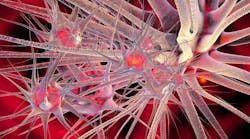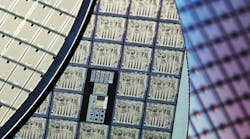Researchers from France and the University of Arkansas have created an artificial synapse in the form of a memristor capable of autonomous learning. “People are interested in building artificial brain networks in the future,” said Bin Xu, a research associate in the University of Arkansas Department of Physics, as quoted at Newswise. “This research is a fundamental advance.” The results were published April 3 in the journal Nature Communications.
As Tom Lecklider points out in an article published last September, humans can solve many kinds of problems at least a million times faster than a classical Von Neumann architecture computer in part because biological systems combine processing and memory instead of separating them as in traditional digital computers. Lecklider’s article focuses on work at DARPA’s Systems of Neuromorphic Adaptive Plastic Scalable Electronics (SyNAPSE) project, at Hewlett Packard Enterprise (in conjunction with SLAC National Accelerator Laboratory and Lawrence Berkeley National Laboratory), and at Knowm.
Xu and his coauthors write, “In the brain, learning is achieved through the ability of synapses to reconfigure the strength by which they connect neurons (synaptic plasticity). In promising solid-state synapses called memristors, conductance can be finely tuned by voltage pulses and set to evolve according to a biological learning rule called spike-timing-dependent plasticity (STDP).”
For their project, a team of French scientists designed and built a memristor made of an ultrathin ferroelectric tunnel junction. The material is sandwiched between electrodes, and the variability in its conductivity determines whether a strong or weak connection is made between the electrodes.
Xu and Laurent Bellaiche, distinguished professor in the University of Arkansas physics department, helped by providing a microscopic insight of how the device functions, which will enable future researchers to create larger, more powerful self-learning networks. The study provided a clear explanation of the physical mechanism underlying the artificial synapse. The University of Arkansas researchers conducted computer simulations that clarified the switching mechanism in the ferroelectric tunnel junctions, backing up the measurements conducted by the French scientists.



